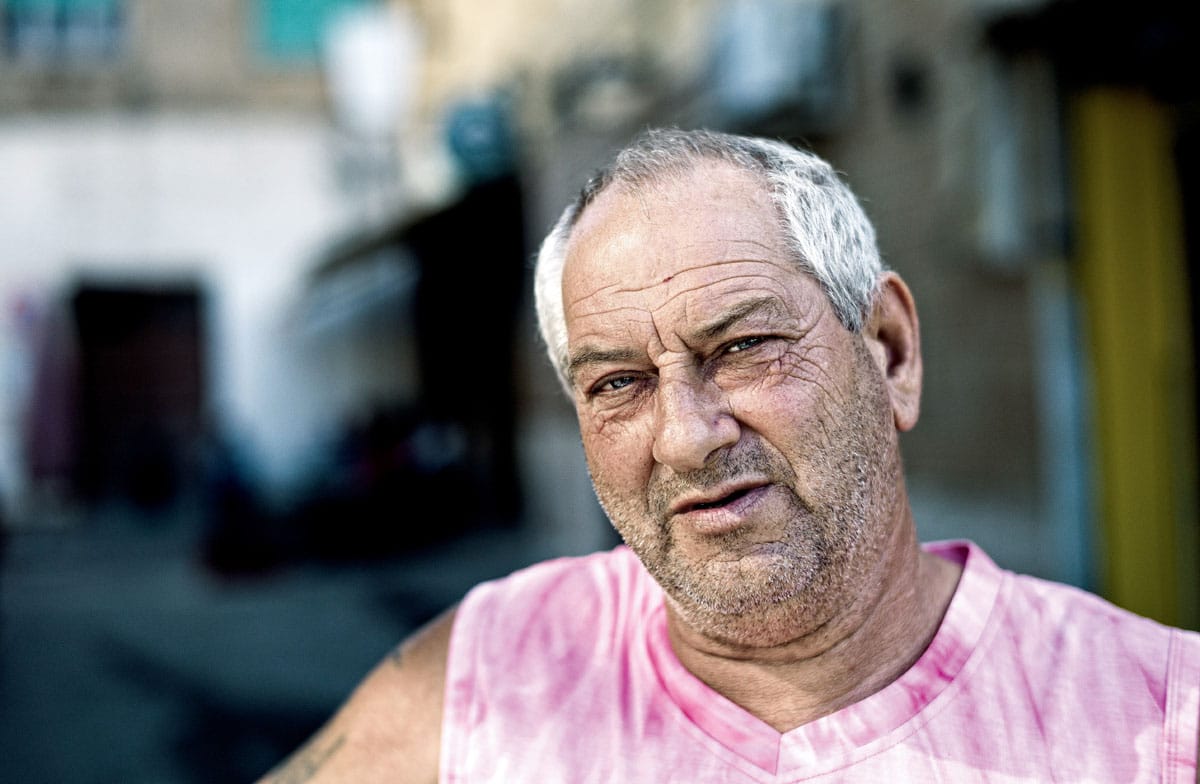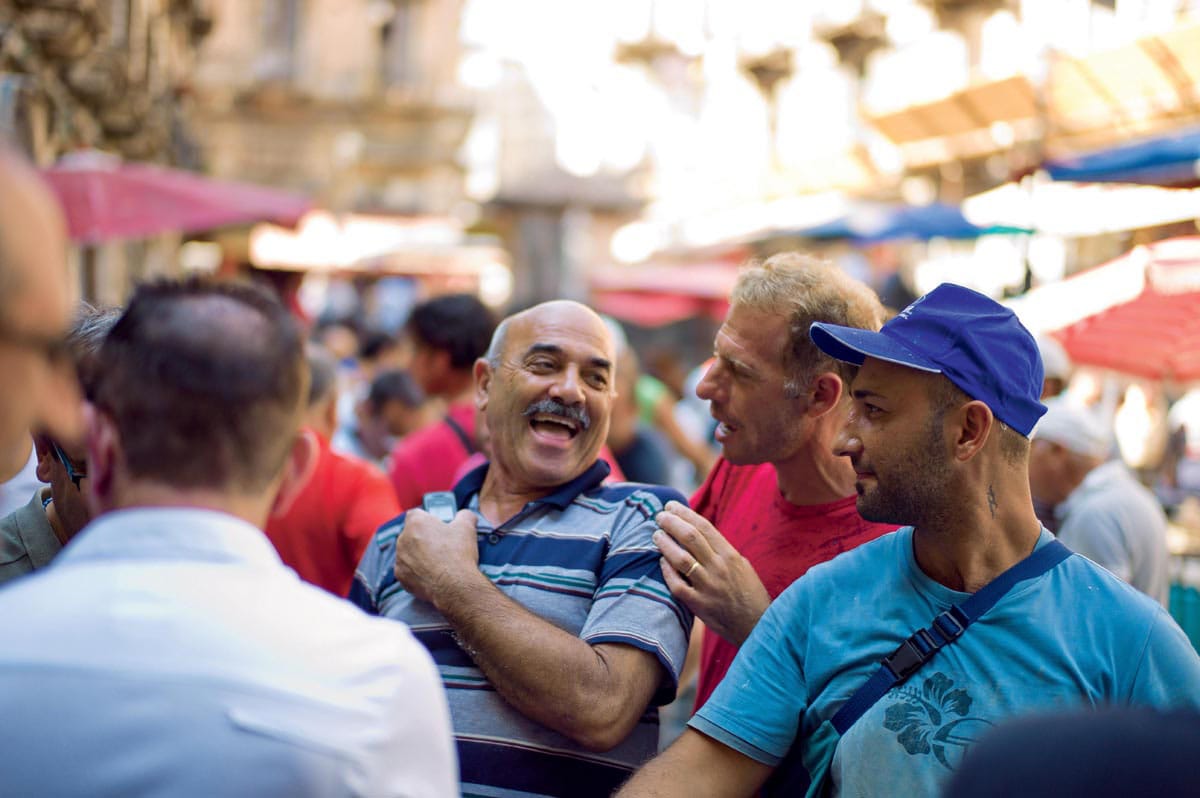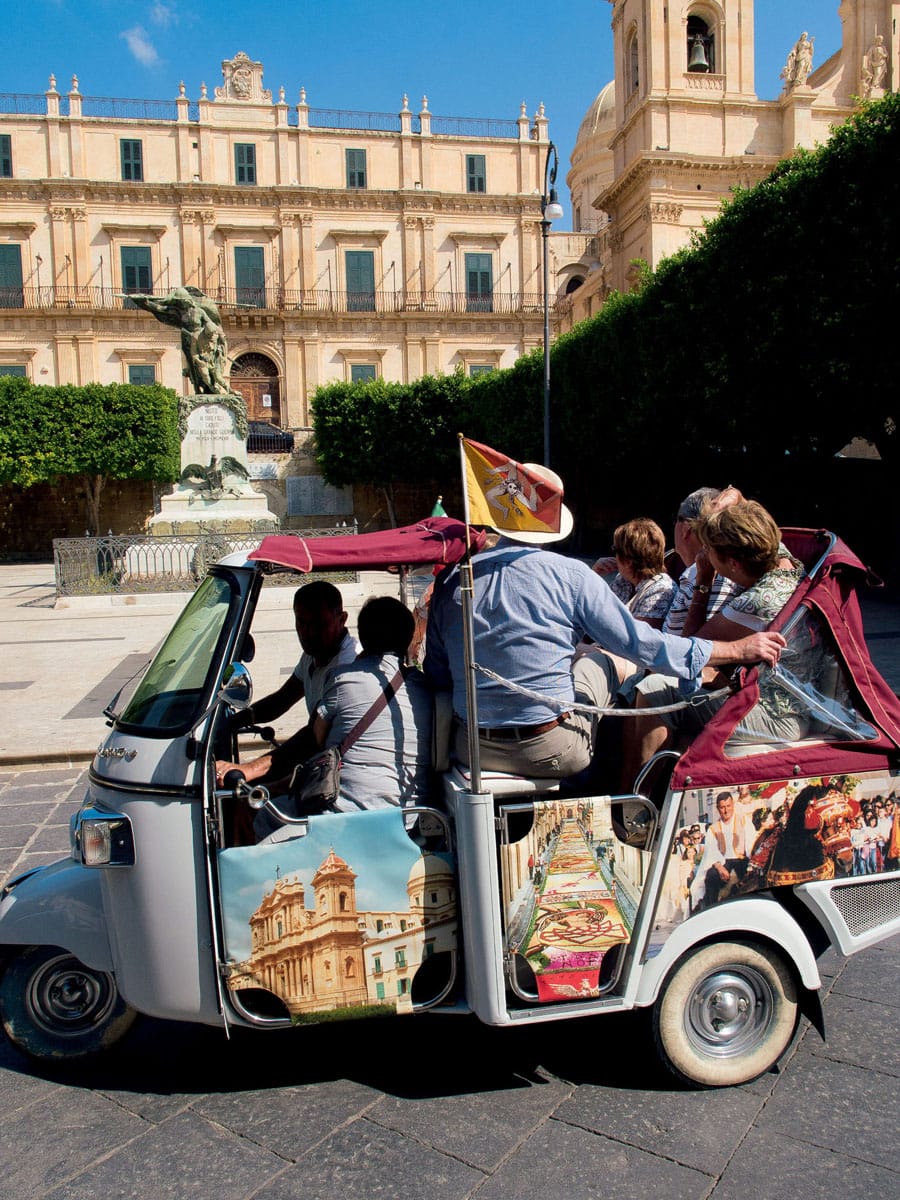Brooding, fatalistic and passionately pessimistic – or celebratory, sensitive and overwhelmingly hospitable? The Sicilians are a mass of apparent contradictions
Sicilians have a reputation for being brooding, suspicious and unfathomable. Closer contact reveals stoicism, conservatism and deep sensibility. This contradictory character does not match the sunny Mediterranean stereotype of dolce far niente, but outsiders may nonetheless encounter overwhelming hospitality, boundless curiosity and smothering friendship on the slimmest of pretexts.
In 1814 the British Governor of Sicily was perplexed that “Sicilians expect everything to be done for them; they have always been so accustomed to obedience.” His Sicilian minister argued for absolutism: “Too much liberty is for the Sicilians what would be a pistol or stiletto in the hands of a boy or a madman.” Critics claim that Sicilians remain sluggish citizens, subsidy junkies with little sense of self-help. Sicilians reply that power and prestige lie elsewhere. History has taught them to have no faith in institutions.

Local man in Mazara del Vallo.
Neil Buchan-Grant/APA
Campaigning Sicilian journalist Giuseppe Fava once said of his beloved island: “The inability to structure society is the Sicilian tragedy.”
The meaning of family
In the face of this, the traditional responses are emigration, resignation, complicity or withdrawal into a private world. Though emigration has been the choice of millions, most Sicilians choose to stay but avoid confrontation with the shadow-state of patronage and the Mafia. They prefer to live intensely, but in private. As a result, their world is circumscribed by the family, the bedrock of island life.
Palermo is emblematic of the retreat from the world and also of an ambivalence about class. It goes against the grain of Sicilian sentimentality to admit that the middle classes have fled the historic centre in droves to settle in safe leafy villages or in the suburbs. Optimists point to a gradual return of the middle classes to the centro storico, with one square held up as a shining example, a socially mixed island which could be the city's salvation. But elsewhere, gentrification looks a long way off. Arab and African immigrants occupy derelict buildings by the port while hovels lurk in the shadow of splendid mansions. The Sicilian upper classes lead such a separate lifestyle that a social vacuum is inevitable. In rural Sicily, the divide is further consolidated by education, Mafia affiliation and isolation.
Appearances matter in Sicily: the word azzizzare (to beautify) comes from the Arabic; orfanità is Spanish-Palermitan dialect for looking good; spagnolismo (Hispanicism) means seeming better than you are.
Yet within a cocoon of personal loyalty to friends and family, individuals cultivate their patch. In a traditionally oppressed culture, one's word is one's bond; lives have depended on parole d'onore, so promises must be kept. But in the eyes of a pessimistic or powerless individual, betrayal can happen only too easily, sparked off by a casual rebuff. Any rejection of hospitality is seen as a betrayal. As a Palermitan lawyer says: “For us, hospitality is a joy and a duty with obligations on both sides. A refusal is not just rude but fuels our complessi di tradimento [betrayal complex].”
Princely hospitality
The joy, of course, comes when the fortress doors are opened and through that chink appears a prince, welcoming you to a courtly scene straight out of Lampedusa's The Leopard, that Sicilian masterpiece of decline and fall. Sicily nurtures the seductive illusion that you are a treasured guest rather than a common tourist. But it may not be an illusion: Sicilian hospitality is legendary, as suffocatingly sweet as the local cassata sponge cake.
Particularly in Palermo and Ragusa, many leading families have decided to open their ancestral homes – and even their hearts – to the general public. Conte Federico, who welcomes guests to his Palermitan palace, embodies this spirit. The unaffected count, who can trace his lineage back to the great Emperor Frederick II of Sicily, enchants guests with an evening of feasting and fantasy in princely proportions, including opera sung by his soprano wife. Before cocktails by candlelight in the Arab-Norman tower, fortunate guests can stroll through the staterooms and admire the suits of armour in the knights’ hall. Dinner is based on exotic recipes dating from when Sicily was under Arab-Norman rule, and the centre of civilised Europe.
Elsewhere, life has moved on, and the princess herself may be turning down your bed-sheets (even princesses need to keep a roof over their heads, and count the cost of cleaning priceless chandeliers and portable altars). But the generous Sicilian spirit remains the same. And this is true of the welcome in the simplest farmstay in the Madonie mountains. Whether a sumptuous palace with a Baroque ballroom or a boutique wine resort near Alcamo, these are genuine homes, and the pleasures are deeply domestic.

Men near the fish market in Catania.
Neil Buchan-Grant/APA
Not that hospitality is ever a simple commercial transaction in Sicily. The truest hospitality comes to foreigners whose slightest friendly gesture is rewarded with fresh pastries, a bunch of just-picked grapes, the keys to a long-closed church, or an insistence on a tour of an obscure archaeological site. Possibly all at once. It is delightful, even when the offers bear no relation to what you wanted.
Foreign fusion
The story of private virtues and public vices is linked to Sicily's hybrid past. As the writer Gesualdo Bufalino says: “The Greeks shaped our sensitivity to light and harmony. The Muslims brought us a fragrance of oriental gardens, of legendary Thousand and One Nights; but they also sowed in us a fanatical exaltation and an inclination to deceit and voluptuousness. The Spanish gave us hyperbole and haughtiness, the magnificence of words and rites, the magnanimity of our code of honour, but also a strong taste of ashes and death.” Even today, the Arab west is overladen with inscrutability, Spanish manners and ceremony, while the Greek east is more democratic, with closer links to the Italian mainland. Sicily's miscegenation lives on in the language. Cristiani (Christians) is a generic word for people, just as turchi (Turks) refers to heathens.
Sicilian proverbs reflect a dog-eat-dog society: “whoever makes himself a sheep will be eaten by a wolf” and “to the docile dog, the wolf seems ferocious.”

Woman in Catania.
Neil Buchan-Grant/APA
Sicily's Baroque architecture is another hybrid – Spanish, Roman and Sicilian fusion, reflected in the islanders’ Baroque temperament. As writer Stefano Malatesta says: “Everything's Baroque, excessive and eccentric: look at the lavish, multicoloured food, the decadent nobles, the elaborate courtesy, the contorted human relationships, the fine 18th-century minds, tinged by arrogance and aimlessness.”
In Ragusa's Duomo, celebrity chef Ciccio Sultano concurs: “my cooking is voluptuously Baroque because I am Baroque: I never remove anything from my recipes but just pile on more.”
A passion for the present
Despite their Baroque spirit and the burden of the past, Sicilians have a passion for the present. Thanks to a heightened sense of history, the islanders attach supreme importance to time. They see themselves as volatile forces of nature, as violent as Etna, but imbued with a sense of the sacred. Spirituality is expressed in spontaneous church services led by lay women. In festivals, classical polytheism merges with Christianity. But the everyday intimacy of the relationship with God implies a chatty equality and an acceptance of Him in any guise.
Lampedusa's The Leopard is illuminating in unravelling this state of being Sicilian: “Sicilians never wish to improve for the simple reason that they believe themselves perfect. Their vanity is stronger than their misery. Every invasion by outsiders upsets their illusion of achieved perfection, and risks disturbing their self-satisfied waiting for nothing at all.”
Still, this melancholic immutability is enlivened by a zest for life best felt in Palermo's Ballarò market, the haunt of artisans and students, housewives and bootleggers. Ballarò is raucous and exotic, with spicy scents and sounds that transport you back to Moorish times. As local actress Teresa Mannino admits, “In Sicily everything screams – the people, the seagulls, even the sea itself.”
But the best advice on fathoming the Sicilian maelstrom comes from fashion designer Domenico Dolce, of Dolce & Gabbana fame, who is passionate about his native land: “Don't go to Palermo with an itinerary, go with an open heart.”
Change is in the air and is cause for cautious celebration, from the resurgent southeast to urban regeneration and rural renewal across the island
Against the odds, Sicilian renewal is under way, even if it would be foolhardy to speak of a Sicilian renaissance: the island is too flawed and fatalistic for that. Still, the Sicilians have a talent for turning the painful past into something of beauty, with the coppola storta (“twisted cap”) a testament to this talent. The cap, the traditional symbol of a lowlife mafioso, is now a cult design object, seen as reclaiming a “true” Sicilian identity. Similarly, land expropriated from the Mafia has been reborn as wine estates for the common good. And once feared symbols such as Palermo's palace of the Inquisition have been turned into telling museums. It's symbolic but also part of the redemption of Sicily.
Known as “an island within an island”, the Val di Noto is currently the most dynamic part of Sicily. The locals attribute its unspoilt countryside, entrepreneurial spirit and escape from the tentacles of the Mafia to good fortune. When the Spanish kings ruled Sicily, the west was divided into vast estates run by absentee barons while the southeast was handed over to the local gentry who cherished their small estates. Partly as a result, in Noto, Módica, Ragusa, Scicli and Siracusa, the Unesco-listed Baroque gems in the Val di Noto, regeneration has taken root, with the cities looking increasingly splendid.
The picture is less rosy in Piazza Armerina, where the restoration of the fabulous Villa Romana is proving more challenging. Neighbouring Aidone has a fine new museum, showcasing Sicilian-Greek treasures “recuperated” from the Getty collection in Malibu. Elsewhere, the island abounds in Unesco World Heritage sites, with Palermo's Arab-Norman treasures currently awaiting listing, even if Palermo's Cappella Palatina has never looked more glittering. On the west coast, Trápani has revamped its historic centre and coastal promenade, while Mazaro del Vallo deserves praise for its Dancing Satyr Museum and vibrant Kasbah. Just along the coast is Marsala's magnificent Punic Ship Museum and Trápani's restored saltpans.
In the top resort of Taormina, both the Grand Timeo and San Domenico are standard bearers for Sicilian luxury. The moody former monastery of San Domenico has acquired its second Michelin star, while the revamped Grand Timeo enjoys Taormina's finest views, with Mount Etna snow-capped or spouting molten lava. In Siracusa, Scicli, Ragusa and Palermo chic boutique hotels vie with palatial B&Bs.
In the countryside, a glut of gorgeous agriturismi (farmstays) and wine resorts now offer a lovely alternative to villa-living, especially when run by an effusive owner. For a very reasonable price, you can find a Slow Food farmstay overlooking a timeless scene of dry-stone walls and ancient olive groves. Not so much “new Sicily” as “old Sicily” reclaimed.
